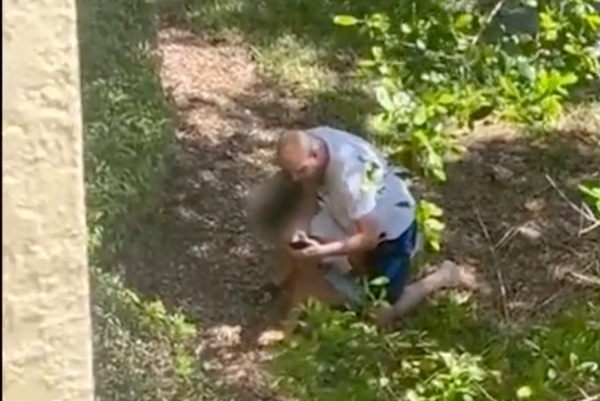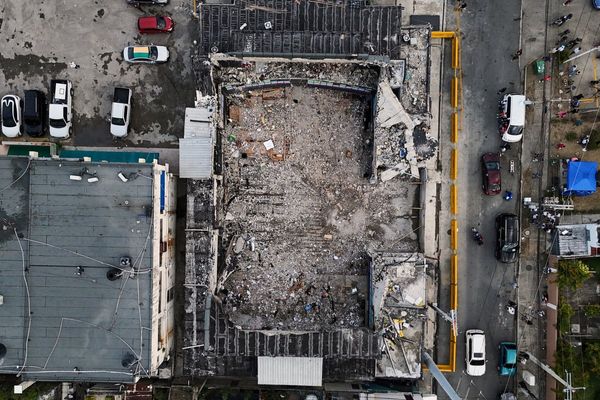
Firefighters were battling blazes across California in grueling heat on Friday, as fast-moving flames erupted near the Oregon border and prompted evacuation orders for at least 5,000 people.
Residents of the towns of Weed, Lake Shasta and Edgewood in Siskiyou county were told to evacuate after a blaze, dubbed the Mill fire, began spreading in hot and windy conditions and grew to 500 acres in about an hour, the Siskiyou sheriff’s office said in a statement.
Power was reportedly out in the area, affecting thousands of homes and businesses. Dramatic images captured by fire monitoring cameras showed ominous plumes of smoke extending over the yellowing tree-covered hillsides. The fire has already caused injuries and ignited several homes, according to local news reports and social media.
Christopher Rock, an employee at the Mayten Store in Montague, a town 30 miles (48km) north of Weed, said evacuees from the fire had swarmed the gasoline pumps.
“It’s really busy right now,” he said. “You can’t see the flames from here, just a lot of smoke.”
Firefighters in the state have been confronted with the additional challenge of extreme heat as they work to contain the outbreaks. California is broiling under temperatures that are expected to linger through Labor Day. Temperatures in north-western Los Angeles county, where another fire, the Route fire, is burning, soared to 112F on Thursday.
Firefighters are “industrial athletes” who might be hauling up to 50lb of gear in addition to their boots, clothing and helmets, and keeping them safe is a priority, especially as they work in steep terrain in extreme heat, said Capt Sheila Kelliher-Berkoh.
On Wednesday, seven firefighters were sent to the hospital after suffering heat injuries. Wildland firefighting has always been difficult, but challenging conditions including intense dryness and soaring temperatures have caused more strain and fatigue in recent years. Along with exhaustion and physical risk, the work is taking a severe toll on mental health.
The issue is expected to only get worse as the climate crisis sets the stage for bigger blazes during dangerous weather.

To relieve some of the pressure, strike team leaders on the Route fire split and rotated crews to ensure they were given adequate time to rest and recharge. “There’s no stand-down work order but they’re really pacing the work,” Berkoh said, adding that “the strategy seems to be working.” No one else had suffered heat exhaustion by Friday morning and containment of fire jumped to 37%.
“There’s no stand-down work order but they’re really pacing the work.”
Progress also was made on the Border 32 fire in eastern San Diego county, near the US-Mexico border, which was 20% contained by Friday morning. That blaze left two people hospitalized with critical second- and third-degree burns, the California department of forestry and fire protection (CalFire) said.
The victims were burned after apparently crossing the border, and five other people had to be rescued, Tony Mecham, CalFire unit chief in San Diego county, said at a news conference.
“Those people ran for their lives,“ he said. “They had a very close call”.
And in Yosemite national parktwo blazes sparked by lighting have together burned more than 5,000 acres. Ignited in early August, the fires are not threatening infrastructure and are burning through dead and downed trees, exhibiting low to moderate fire behavior.
With flames kept low and slow, the blazes may be more helpful than harmful, chewing through excess vegetation and creating healthier landscapes. But they have caused trail closures in the park and continue to cloaked Yosemite Valley in hazardous smoke ahead of the busy holiday weekend.
California is bracing for continued high fire risk, with even higher temperatures forecast in the coming days. Parched, overgrown landscapes, impacted by prolonged period of drought, are primed to burn.
The National Weather Service warned high temperatures across the west were anticipated to threaten daily and even monthly records headed into the weekend. On Friday, temperature highs were expected to reach into the upper 90s and triple digits were expected throughout the region, with excessive heat warnings and heat advisories in place for much of California, Nevada, Oregon, Washington and Idaho.

Temperatures are forecast to increase to near 110F on Sunday over interior sections of California, according to the NWS.
The triple-digit forecasts prompted worries about straining the state’s electrical grid as people turned to their air conditioners. The California Independent System Operator, which oversees the grid, issued a “Flex Alert” call for voluntary conservation between 4pm and 9pm on Friday, the third alert in a row.
State officials urged owners of electric vehicles to limit when they are plugged in to avoid straining energy sources during those peak usage times, a move that came just a week after California approved an ambitious plan to phase out the sale of gas-powered cars.
The California governor, Gavin Newsom, said the heat was more evidence for the need for speed in shifting toward renewables. “Mother Nature has outrun us,” Newsom said at a news conference on Wednesday, the same day the California legislature approved an ambitious $54bn in new climate spending.
Wildfires have sprung up this summer throughout the western states. The largest and deadliest blaze in California so far this year erupted in July, in Siskyou county. It killed four people and destroyed much of the small community of Klamath River.
Scientists say the climate crisis has made the west warmer and drier over the last three decades and will continue to make weather more extreme and wildfires more frequent and destructive.







